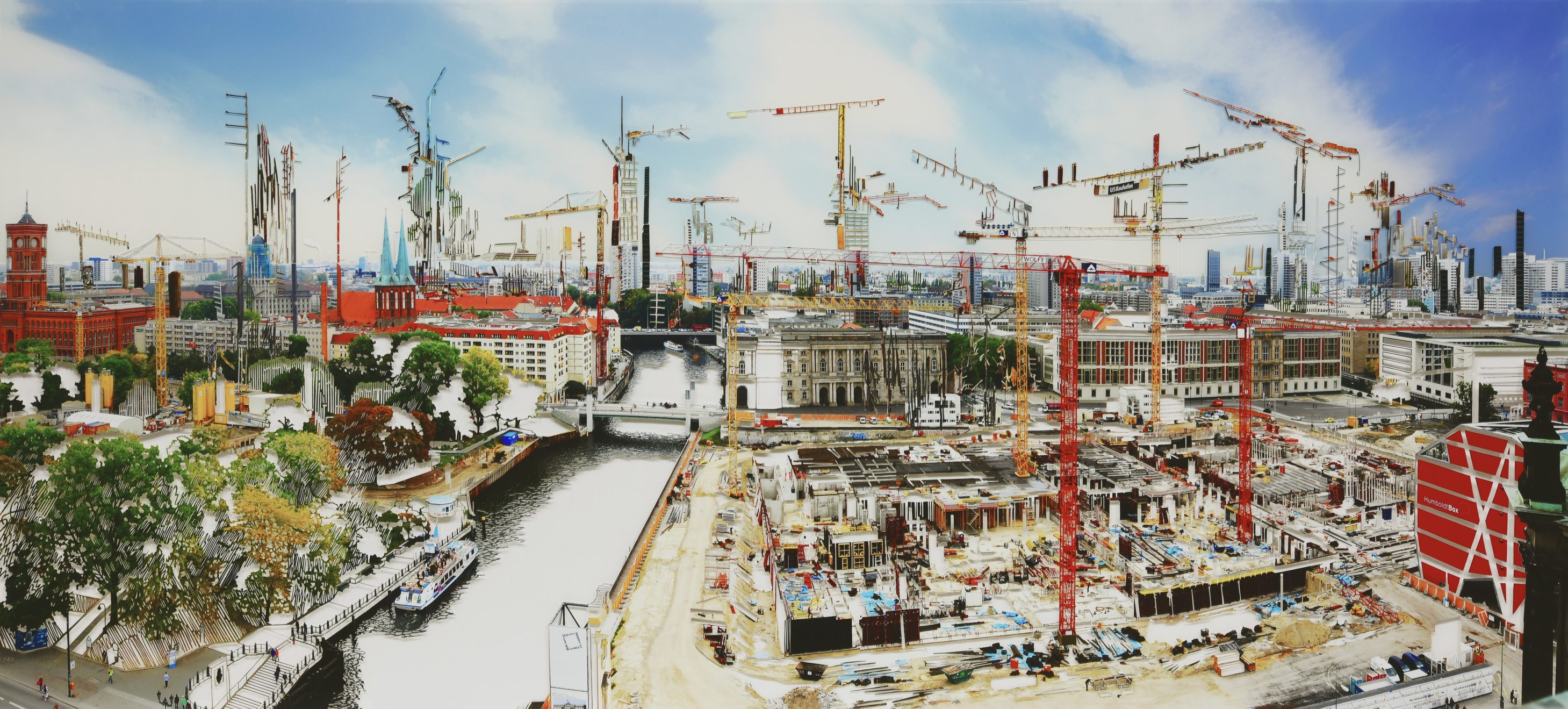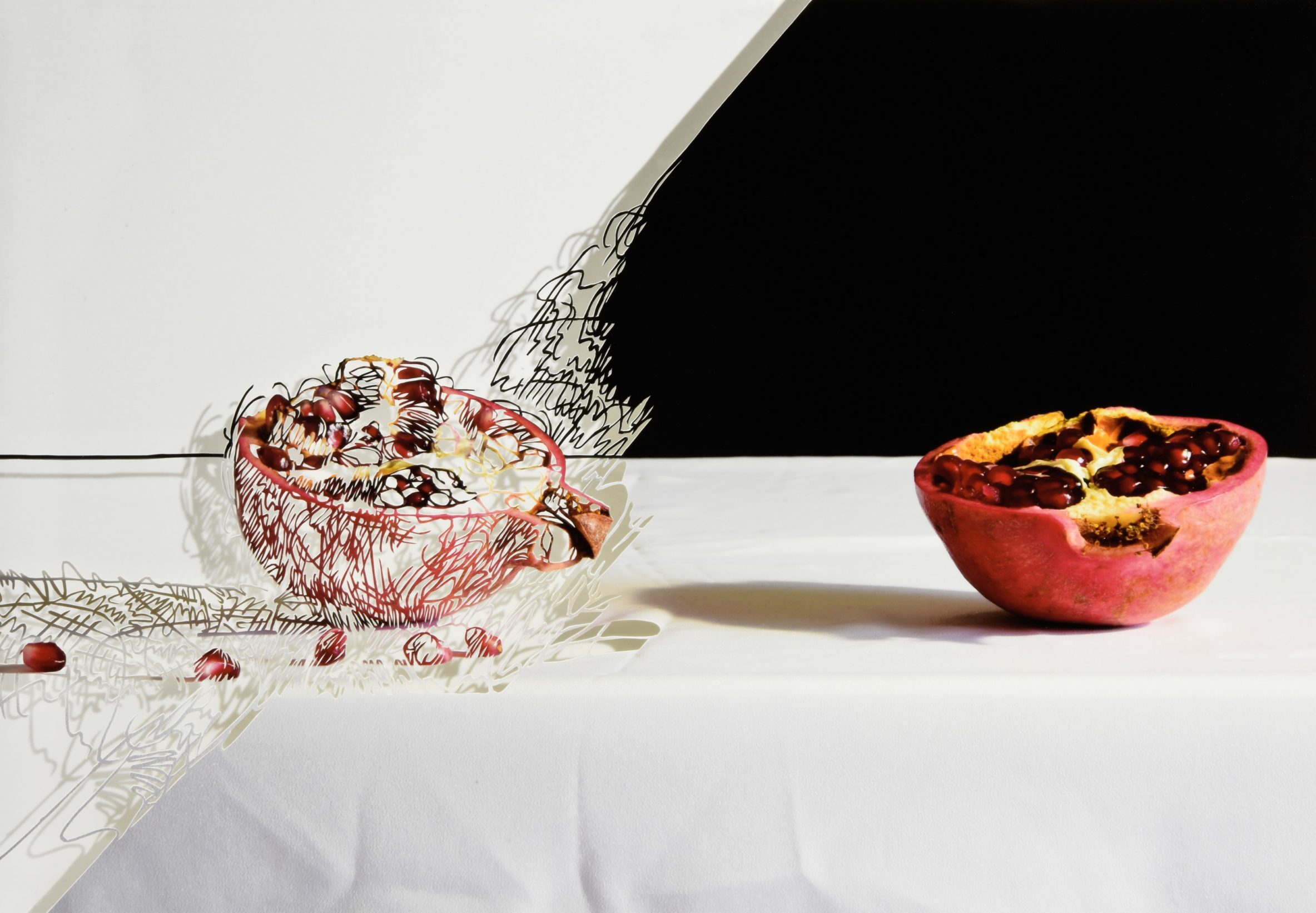News
Shu Ikeda : Traces of Travel

BerlinerDom, Berlin
2021
photographic collage, mounted on acrylic
70 x150 cm
Maki Fine Arts is pleased to present Traces of Travel, a solo show by Shu Ikeda, starting Saturday, February 5, through Sunday, March 6, 2022. Ikeda has been producing works that traverse between painting and photography by creating unique shapes and voids out of photographs and using collage techniques. His subject matter has included landscapes depicting plants and water surfaces, scenes of Tokyo’s urban development before the Olympics, and still life detailing fruits and flowers.
In his sixth solo show with Maki Fine Arts, Ikeda will showcase new works using photographs the artist has taken during his travels to places like Berlin, Paris, Helsinki, and London. The works capture the moment his photographic travel records transform into a brand-new scene through his masterful cutting and collage-layering techniques. Looking at the crisp, highly-honed scenes displayed on the canvas, one may get a sense of how the artist approaches his works, perhaps in an attempt to reclaim the sensation of time that was lost due to the Covid-19 pandemic.
—
There’s often a gap between what you envisioned before your travels and what you actually experience and realize once at the destination. We travel to see and experience the unfamiliar. When we do, we often notice that the familiar suddenly feels novel, and what you thought would be straightforward was not so obvious after all. The appeal of travel–stepping away from your normal day-to-day life to discover something new and be amazed by or learn about cultural and ideological differences–has an addictive allure similar to how one can be drawn to art.
From 2020 through 2022, Covid-19 added numerous restrictions to our daily lives. Overseas travel, in particular, became difficult, making me painfully aware that we took for granted the ability to travel and the joy we experience capturing those memories using a camera. For this show, I used photographs taken during my travels as the base for my works. Those years seems like a lifetime ago, yet somehow it felt relevant to look back at my travel photos as part of my creative process during this challenging time.
In Traces of Travel, I use the photos as evidence of the trips and many of the works include traces that indicate the presence of something–such as light trails, brushstrokes, fragments, and voids.
Similar to how something lost makes you realize its essence or value, by cutting out photos and trimming off elements, I explore how it might be possible to find the answers to the questions ‘what is photography’ and ‘what is image.’ When one returns from travel or an art exhibition and can now look at their normal day-to-day life from a different angle, wouldn’t that mean they had a good experience?
Shu Ikeda
—
Shu Ikeda
Born 1979 in Hiroshima, Japan, Ikeda graduated with an art degree from Tokyo Zokei University in 2004. He currently lives and works in Tokyo. Using nature and urban landscapes as motifs, Ikeda has been producing works that traverse between painting and photography by creating unique shapes and voids out of photographs and using collage techniques. Major shows include Object and Image (solo, Maki Fine Arts, 2019), Sight (solo, Roppongi Hills A/D Gallery, 2018), and Why not live for Art? II – 9 collectors reveal their treasures (group, Tokyo Opera City Art Gallery, 2013).
Shu Ikeda : Object and Image

Pomegranates #1
2019
cut-out photograph, mounted on acrylic
27 x 38 cm
Maki Fine Arts is pleased to present Object and Image, Shu Ikeda’s fifth solo show at Maki Fine Arts, starting Saturday, May 25, 2019. Using still-life painting in art history as the subject matter, Ikeda examines the relationship between object (physical matter) and image (image data) with a critical eye. Ikeda has been showcasing works that oscillate between painting and photography using nature and urban landscapes as motifs, creating unique shapes and negative spaces by cutting out the photographs and using the cut-out elements to design collages. His new works demonstrate how his creations continue to evolve; arbitrary elements have been curtailed while compositional ideas, such as utilizing the back side of a photograph and implementing inversions and contrast, have been incorporated.
Shu Ikeda
Born 1979 in Hiroshima, Japan, Ikeda’s past exhibitions include Sight (solo, Roppongi Hills A/D Gallery, 2018) and Why not live for Art? II – 9 collectors reveal their treasures (group, Tokyo Opera City Art Gallery, 2013). Object and Image marks Ikeda’s fifth solo exhibition with Maki Fine Arts following Reverse/Rebirth (2017), In Between Places (2015), From the Bloom to the Blank (2012), and Another Yesterday (2011). For the entire year of 2017, Ikeda’s works were features on the covers of Ohararyu Ikebana magazine, a monthly Japanese flower arrangement publication.
—
Still-life painting is one of the traditional genres in art history, initially placing emphasis on elaborate and lifelike representation of the real while incorporating metaphoric expressions, such as the implications of death and the fragility of human life and vanity. Since its establishment in 17th-century Western painting, it has been incorporated into works by artists including Chardin, Cézanne, Morandi, and others using the styles of Cubism and Surrealism. Beginning in the late 19th century, conforming to the meaning and reproducibility of the subject matter became less important, and more emphasis was placed on compositional aspects on the surface. By the early 20th century, still-life paintings by Picasso and Braque were viewed as a landmark for the technique of collage. My previous work method consisted of capturing scenes of nature and urban landscapes with a camera and cutting out those photos to use them in collage. I realized that, from the perspective of subject placement and composition as well as from the perspective of history, still-life painting was intimately related to collage, and this realization became the genesis and bedrock of the works presented in Object and Image. For my new works, I referenced past still-life paintings and extracted elements while blending cut-outs and collage techniques to mark my own current expression. By cutting into the photographs, the elements of paintings/photographs, physical matter/images, and exterior/interior are realized, and the surface is recomposed to allow conflicting mutuality to coexist. Today, we scroll through massive amounts of doctored photos. It is my hope that pausing and noticing the illusionary images or the tenuous materiality and reality can help the viewers feel amazement and amusement that comes with the act of seeing.
-Shu Ikeda

